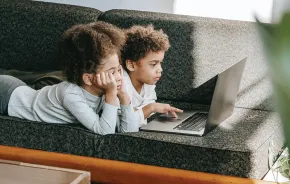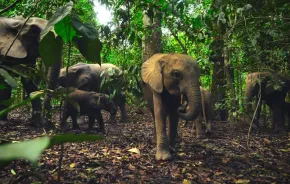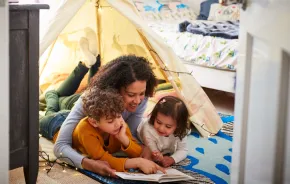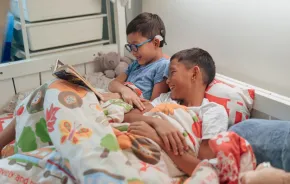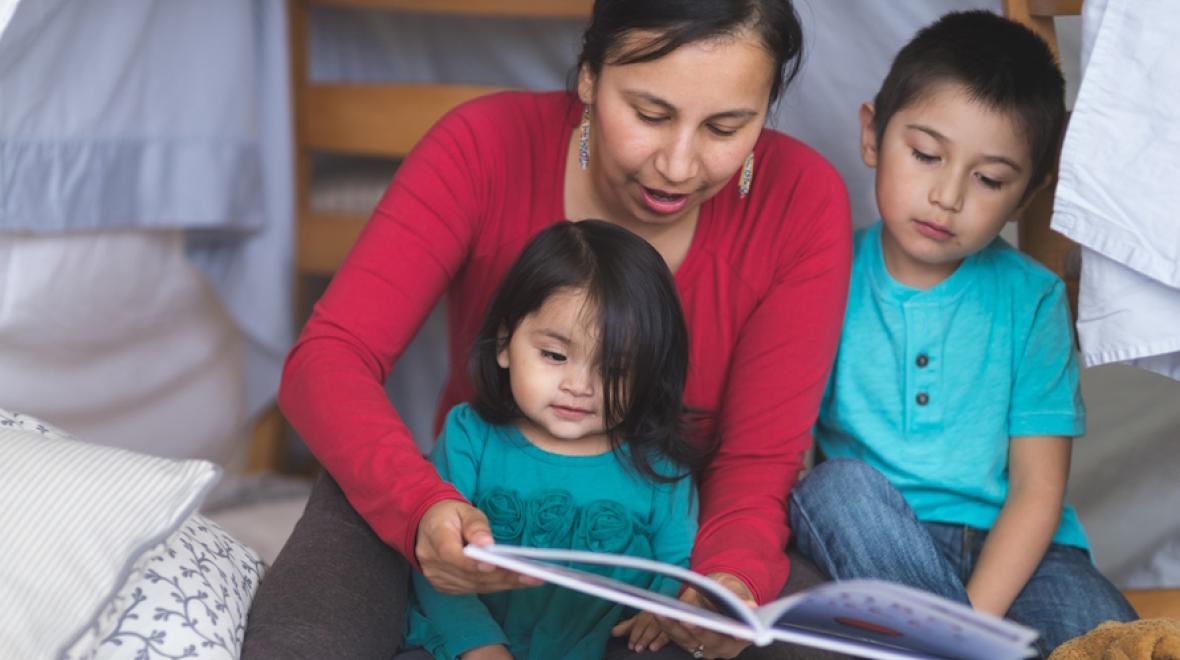
As we look ahead to another holiday season, Americans can expect to be inundated with messages of good cheer and reminders to focus on family and fun. But most Americans don’t realize that this is also a crucial time of remembrance for all people living in America — a time to recall the Native nations and their families who, for thousands of years, have called this continent their homelands.
Fall is a particularly distressing time of year for Native peoples in America. The season includes Columbus Day, which frames Columbus as a hero who “discovered” America when in reality he committed horrible atrocities against Indigenous peoples who were already here. Fall also includes Halloween when kids and some adults dress up in wear offensive, appropriative “Indian” costumes. And there’s Thanksgiving, which serves as a devastating reminder to Native peoples of colonization’s impact — genocide, theft of their lands and near cultural erasure.
This is why activists have worked hard to rewrite this season in the national consciousness as a time of commemoration rather than one of celebratory patriotism. Some gains have been made. In 2014, the Seattle City Council unanimously voted to rename Columbus Day as Indigenous Peoples’ Day, a day to honor Native peoples (which was first recognized by the White House in 2021). But we have much more work to do. And as parents, one of the most important things we can do with our kids is read books that center, authentically and with dignity, the stories of the Native nations.
Debbie Reese, the co-author of this article, is tribally enrolled at Nambe Pueblo in northern New Mexico. A former schoolteacher and professor, she has maintained since 2006 a blog called American Indians in Children’s Literature. Her writings on children’s literature are taught in universities internationally. Debbie has seen way too many Americans ignore Native history and reduce Native peoples and culture to feathered headdresses and tipis, something “past” and “primitive.” The truth is far from that stereotype.
There is actually powerful and living diversity amongst Native nations. For instance, the households and household items of Northwest nations vary visually from those of Southwest nations because of their different use of natural resources. In New Mexico alone, there are 19 different pueblo nations representing four different languages. To date, there are 574 federally recognized tribes in the United States, well-ordered societies with forms of governance all the way back to when Europeans first arrived on this continent. It is vital we read books that are tribally specific, include Native sovereignty and depict Native peoples as diverse people of today.
Following are eight book recommendations from Debbie Reese. Use these as a start toward incorporating Indigenous-centered literature in your family’s library and reading, and please further support Native communities by purchasing titles from Native-owned book retailers such as Birchbark Books.
Board books and picture books
Boozhoo, Come Play With Us
By Deanna Himanga
Published in 2002 by the Fond du Lac Band of Lake Superior Chippewa, this playful bilingual Ojibwe/English board book for toddlers comprises photographs of Native kids at Fond du Lac Head Start and is dedicated to the many children of the Fond du Lac Reservation.
We All Count
By Julie Flett
A beautiful bilingual counting book by Canadian-based Cree Métis artist, Julie Flett. Through colorful collages, animal exploration and pictures of Native peoples, numbers 1–10 are presented in Cree (with Cree pronunciation) and English.
Hungry Johnny
By Cheryl Minnema
Published by the Minnesota Historical Society Press, Hungry Johnny is the story of an Ojibwe kid named Johnny who feels something every kid can relate to — hunger! Includes Ojibwe words, teachings, food and cultural practice. Ojibwe author Cheryl Minnema and illustrator Wesley Ballinger are both from the Mille Lacs Band of Ojibwe.
School-age and middle-school books
How I Became A Ghost
By Tim Tingle
Tim Tingle is an Oklahoma Choctaw award-winning author and storyteller. He has recorded the stories of many tribal elders in addition to retracing the roots of the Trail of Tears to Choctaw homelands. The first of a trilogy, “How I Became A Ghost,” is a tale of innocence and tragedy told by Isaac, a Choctaw boy who does not survive the Trail of Tears.
The Birchbark House
By Louise Erdrich
The first in The Birchbark series, “The Birchbark House” follows the life of Omakayas and her Ojibwe community in 1847 near present-day Lake Superior. Louise Erdrich is an Ojibwe writer of novels, poetry and children’s books and an enrolled member of the Turtle Mountain Band of Chippewa Indians, a band of the Anishinaabe.
In the Footsteps of Crazy Horse
By Joseph Marshall III
Set on the present-day Rosebud Sioux reservation, “In the Footsteps” follows Lakota boy Jimmy McClean as he embarks on a journey with his grandfather to learn about his Lakota heritage and the resistance of his people. Author Joseph Marshall III was born and raised on the Rosebud Sioux reservation and is an enrolled member of the Sicangu Lakota (Rosebud Sioux) tribe.
High-school-age books
If I Ever Get Out of Here
By Eric Gansworth
Eric Gansworth is a writer and visual artist, and member of the Onondaga Nation. His 2013 Young Adult debut novel, “If I Ever Get Out of Here,” is about Lewis “Shoe” Blake, 1970s life on the Tuscarora Indian reservation, interracial friendship, memory and love of rock ‘n’ roll.
Dreaming In Indian
Edited by Lisa Charleyboy and Mary Leatherdale
Dreaming In Indian is a powerful and arresting anthology of art, poetry and prose from some of the most groundbreaking Native artists today. The collection breaks down Native stereotypes and challenges the reader to rethink. Editor Lisa Charleyboy is a First Nations writer, social entrepreneur and editor-in-chief of "Urban Native Magazine."
Debbie Reese co-authored this article. Reese is tribally enrolled at Nambe Pueblo. Her book chapters and articles are taught in Education, English and Library Science courses in the U.S. and Canada. She maintains the extensive blog American Indians in Children’s Literature where you can find her latest recommendations.
Editor’s note: This article was originally published in 2015, and updated in November 2023.








